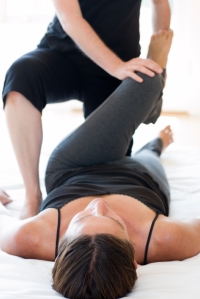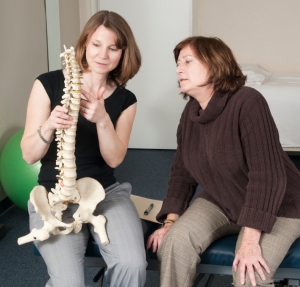Month: February 2013
Welcome to The Studio Norfolk
The Studio Norfolk Class Timetable
The Studio Norfolk – Class Timetable
Small group classes for a maximum of 6 people.
Booking with prepayment is essential. http://www.thestudionorfolk.co.uk/page9/page11/
The I Move Freely Pilates is a modern programme Anne has created specifically for people restricted by tightness and/or pain. She has used the principals of Pilates for core stability, combined them with Bio Mechanic techniques for the release of tight muscles, and finally added exercises designed to combat back pain. This has moved Pilates from its origins and brought it up to date with current research. The addition of bio mechanic and back exercises give the extra benefits of all round core stability, improvement in back health, and better posture.
Thursday
09.00 I Move Freely Pilates for shoulders and backs
10.05 I Move Freely Pilates at a general level
Friday
09.20 I Move Freely Pilates for Core Stability
10.30 I Move Freely Pilates for Osteoporosis
18.00 I Move Freely Pilates for all levels
19.00 I Move Freely Pilates beginners
Saturday
09.30 I Move Freely Pilates for all levels
Sunday
10.00 Freestyle Fitness Yoga
Welcome to The Studio Norfolk
Welcome to the Norfolk Studio, set in a beautiful relaxing location with stunning views.
It is easily accessible from Aylsham, Roughton, Reepham, Cromer, Sheringham, North Walsham, Holt, Norwich or anywhere in North Norfolk.
We can be difficult to find on your first visit, so if you haven’t been to us before, why not look at our How to find us page. Please take a few minutes to explore what we offer and see how we could help you. Pilates, Yoga, Biomechanics, Personal Training, Postural Assessment, Sports Massage and Functional Fitness.
To receive a weekly email with information on class times and availability subscribe to our mailing list here: http://www.thestudionorfolk.co.uk/page9/page23/
The Studio Norfolk offers a small range of specialist exercises classes for up to 6 people per class.
The I Move Freely Pilates is a modern programme Anne has created specifically for people restricted by tightness and/or pain. She has used the principals of Pilates for core stability, combined them with Bio Mechanic techniques for the release of tight muscles, and finally added exercises designed to combat back pain. This has moved Pilates from its origins and brought it up to date with current research. The addition of bio mechanic and back exercises give the extra benefits of all round core stability, improvement in back health, and better posture.
If you are looking for increased strength and flexibility and don’t have any back or knee injuries then our Freestyle Fitness Yoga classes may suit you. This is not a spiritual experience, there is no meditation nor relaxation element. Extreme postures that exceed the normal range of movement are avoided. You can expect to improve flexibility and strength within 10 weeks. In addition you can learn how to identify your bodies stabilizing muscles and use them effectively and efficiently to improve your posture and move with confidence
Biomechanics A new approach to reducing aches and pains.
Biomechanics really can improve many painful conditions, often following just one session. As a Bio Mechanic Coach Anne uses Bio Mechanic principles within the I Move Freely Pilates group classes but you may wish to consider a one to one session:
Why consult a biomechanics coach?
- Recurrent injury. If you have a recurrent injury, our Biomechanics Coach will be able to determine whether there are any biomechanical problems that may be causing it to occur repeatedly; a series of exercises would then be prescribed, to help minimise the risk of recurrence.
- Pain. If you experience pain, for example when running, sitting at a desk or working in the gym, a biomechanics coach can establish whether that pain has a biomechanical cause. If so she can then prescribe remedial exercises to treat the pain.
- Optimal performance If you are looking to improve your performance in a particular sporting or physical task, then our Biomechanics Coach will be able to prescribe tailored exercises to help you achieve your goals.
Personal Training with Functional Fitness – the ultimate personalised training experience for the way you live your life.
Functional Fitness is concerned with giving people the level of fitness that they need to cope with their normal every day life. For example; if you are not a gymnast, why train for extreme flexibility? However, you do need to be able to reach your feet to tie your laces, which is often a cause of back injury. We concentrate on those capabilities that you will use every day, intially core stability and subsequently more specific exercises e.g. for parents to combat back problems from lifting or carrying their children.

Classic fitness training, often using machines and weights, restricts movements to a single plane of motion for safety reasons. However this is not the way we move in every day life, so can result in imbalanced muscle development, and hence, an increased risk of injury.
Functional Fitness ensures that we exercise the muscles we use in our life, to the level required. Building a programme of exercises that target individual, and groups of, muscles to match your lifestyle.
In this way you can train your body to be capable of doing real life activities in real life positions, not just to lift a weight in an idealised position on a machine at the gym.
Postural Assessment
Do you suffer from recurrent pain or stiffness in the shoulders, neck or back?
It is often the case that this is caused by a postural imbalance.
We are pioneering a new approach to alleviating these issues by addressing the root causes rather than treating the symptoms.
Most of us are walking around with less than perfect postures although we may be quite fit and healthy. We may not be feeling any pain but could be building up problems for the future.
The postural imbalances may cause stiffness and/or pain which we accept as normal or part of the ageing process. Any length of time we spend in one position, for example, at a desk, using a computer, or driving a vehicle, can exacerbate these aches and pains.
These symptoms may be relieved by a massage or visit to a chiropractor but often recur. Postural assessment and correction may provide a long term solution. It is based on small changes to daily habits and regular tailored exercises. The exercises are small, simple, quick to perform and can be done in the comfort of your own home.
Sports Massage You don’t have to play sport to benefit from a sports massage. If you have tightness or pain in a specific area, a sports massage can help provide relief.
Relaxing Massage
In addition to sport massage with its tangible results we also offer the more relaxing massage techniques. These are ideal for stress relief, the release of tight shoulders and for anyone who needs to relax but prefers a lighter touch. Choose from Hot Stone Massage, Indian Head Massage or a regular Body Massage.
Sport Massage for Back Pain
Class Diary for The Studio Norfolk
About
The Shoulder/Low Back Pain Connection
You wake up one morning with back pain, spend all day driving and your shoulders ache. You book a treatment with the physio/osteopath/soft tissue therapist. They ask what the problem is and you don’t really know where to start. Does this sound familiar?
To discover the source of the pain think about how your body is connected. Skeletons show you bones, muscle maps show muscles, but what else holds you together? The answer is ‘fascia’.
What is it, and, what is the connection to shoulder and back pain.
Wikipedia defines it like this:
‘A fascia is a structure of connective tissue that surrounds muscles, groups of muscles, blood vessels, and nerves, binding some structures together, while permitting others to slide smoothly over each other.
I would add to this a totally non-technical description which may enable you to picture it better. If you look at a joint of meat, it’s likely to be held together at least in part by tough a white covering which clings to the meat but is not fat. This is fascia.
Back in your body, there is fascia connecting your muscles to each other in various ways. The ones I am going to focus on are those connecting your shoulders to your lower back. The thoracolumbar fascia which is a direct link from your shoulders to your lower back. If your shoulder muscles tighten following a long drive, your shoulders rise and pull everything upward. In doing this your fascia is pulled tightly. (similar to making a bed with the bottom sheet not being straight causing a pull diagonally across the bed) If you pull one end of most things it will cause tension at the other end and the fascia in your back is no exception. The other end of the shoulder fascia is at your lower back. The fascia is pulled, so the muscles of the lower back are stressed and they tighten. Then your lower back hurts too. Equally the scenario can be reversed, the lower back muscles may tighten leading to shoulder pain.
The question is how to check this, and how to get it treated. I would use bio mechanic testing to see whether there is muscle spasm in the shoulders or pelvis. If this is present it is likely that there will be tightness across the fascia.
Once this is established a series of bio mechanic releases can be performed to encourage the muscle to release. If a release of the pelvic muscles gives more movement in the shoulders it would indicate a connection which is worth persuing. A gentle but firm massage over the back from the pelvis up to shoulder will enable the fascia to release and loosen its hold on the muscles. Working into the fascia you may feel it loosening during the treatment. I sometimes introduce deeper massage into muscle tissue along the line of the shoulder (upper trapezius) and the pelvic line (gluteus medius) but this will depend on the individual I am treating.
This is not a simple one treatment solution even if you can identify what causes the problem. Frequently a combination of lifestyle and posture are at least partly to blame for this tightness and, both are worth addressing to reduce the symptoms. If it is a case of managing the tightness I would recommend following up with work to the deeper muscles and continued bio mechanic anti spasm exercises done at home in between treatments. In my experience two/three treatments combined with home exercises and a monthly massage is enough to manage the muscle and fascia tightness caused by the stress of everyday life.
If you have experience of this as a recipient or a therapist I welcome comments and feedback.
Shoulder Pain or Tightness?
Tightness in the shoulders is a common problem which can be helped enormously by massage. Recently I have treated a variety of clients providing excellent examples of the benefit of massage for shoulder problems.
I have recently started to use Indian Head Massage techniques alongside Sport Massage to get an effective result. Often when your shoulders tighten so does your neck, causing more pain. Alternatively, you may have a pre-existing structural condition with your neck which manifests itself as shoulder tightness. In both of these cases Indian Head Massage is able to relax the tight muscles without the need for deep tissue manipulation.
For anyone which limited movement through the shoulder area a combination approach often offers relief. Bio Mechanic releases encourage the muscles to relax while gentle postural corrective techniques encourage the shoulders back to their correct position. Following this with massage is likely to achieve a longer lasting effect. Regular treatments combined with an exercise programme can give a permanent improvement.
Another technique I have sucessfully used is to massage the whole back, from pelvis (hip line) up to the shoulders. If the superficial tissue and fascia is warmed and released the underlying muscles can begin to function in the correct manner. I often combine this technique with trigger point techniques to release any remaining areas of tightness.
These techniques have proved to be very sucessful in recent months but I am continually looking to find new ways to solve the never ending problem of tightness in the shoulders so I welcome any feedback both from fellow therapists and from anyone who has recently had an effective massage.



